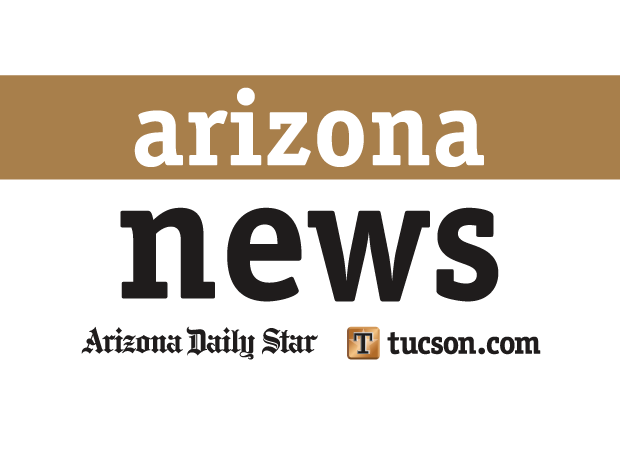An estimated 162,000 Arizona children are without health insurance, but that number is expected to drop significantly this fall.
On Tuesday, the state of Arizona will for the first time in six years begin taking applications for the government-sponsored health-insurance program KidsCare, for coverage beginning Sept. 1.
KidsCare is Arizona’s version of the federal Children’s Health Insurance Program, known as CHIP. CHIP was created in 1997 with bipartisan support during the Clinton administration. Between 1997 and 2012, the uninsured rate for children in the U.S. fell by more than half, from 14 percent to the current rate of 6 percent.
Arizona’s rate of uninsured children is 10 percent, according to research conducted by Georgetown University.
KidsCare is administered by the state’s Medicaid program, which is known as the Arizona Health Care Cost Containment System (AHCCCS).
Federal dollars will cover the entire cost of the program at least until 2017. Gov. Doug Ducey signed Arizona law SB 1457 reinstating the program on May 6. The Arizona House passed it 38-21, and the Senate vote was 16-2.
Critics worried that Arizona will eventually have to pick up the tab for the program. Supporters said reopening the program was the moral thing to do for Arizona children.
Until now, Arizona has held the distinction of being the only state without an active CHIP program. The state also has the third-highest rate of uninsured children in the U.S., according to a study by the Center for Children and Families at Georgetown. Only Alaska and Texas have higher rates.
The Georgetown study said that despite positive effects of the Affordable Care Act in Arizona, “It remains among the worst states in children’s coverage, likely reflecting the lack of KidsCare.”
Health-policy experts and supporters of KidsCare say families in the KidsCare income bracket are making too much to qualify for AHCCCS but often not enough to afford commercial insurance, including what’s offered on the federal marketplace, even with subsidies.
Before an enrollment freeze that began in 2010, KidsCare in Arizona provided health care to low-income children in families with incomes from 138 percent to 200 percent of the federal poverty level, or an income of $27,000 to $40,000 per year for a family of three, or up to $48,600 for a family of four.
At one time, the program enrolled nearly 50,000 children. Enrollment is now down to 549 children.
“KidsCare restoration helps cover our most vulnerable population — our children. Studies demonstrate that such coverage improves health outcomes, and yields significant benefits in terms of educational attainment for these children,” said health-policy expert Dr. Daniel Derksen, a professor at the University of Arizona’s Mel & Enid Zuckerman College of Public Health.
“It is one of the most cost-effective public health interventions to help assure the health and wellness of Arizona’s children.”
Officials with AHCCCS expect that within its first year of being newly active, KidsCare will enroll 30,000 to 40,000 Arizona children.
Those enrollments are expected to reduce Arizona’s rate of uninsured children.
Under KidsCare, families pay a monthly premium depending on their household income.
Monthly premiums can range from $10 for one child in a household at the lower income range up to $70 for multiple children in households at the upper income range.
To apply for KidsCare children must be 18 years and younger, Arizona residents and have a Social Security number or be applying for one. Applicants must also be a legal U.S. citizen or qualified immigrant, under the income limit, willing to pay a premium and not eligible for AHCCCS.
Outreach will be important in getting the word out to hard-to-reach populations, such as families rural areas, and in Hispanic/Latino populations, Derksen said.
And once enrolled, further education and information about accessing care will help ensure that well-child care, primary and preventive care, such as immunizations, are used, he said.
A network of navigators and enrollment assisters will be available at community health centers to help families enroll, said Allen Gjersvig, director navigator for enrollment services at the Arizona Alliance for Community Health Centers.
A statewide coalition called Cover Arizona will be doing outreach with Headstart programs, school nurses, immunization sites and other places where families and children frequent, Gjersvig said.
“There is going to be a lot of grassroots information to targeted areas and organizations,” he said.
An analysis by Gjersvig’s organization and the Cover Arizona Coalition estimates 34,278 Arizona children are currently eligible for KidsCare, including nearly 5,000 in Pima County.
Gjersvig advises families that when in doubt, they should seek help in both determining whether they are eligible and in enrolling.
“If your children are covered right now, be very careful and seek the advice of someone who is an expert. We don’t want people to assume they can drop their coverage and then sign up. Don’t make the switch without seeking advice.”





